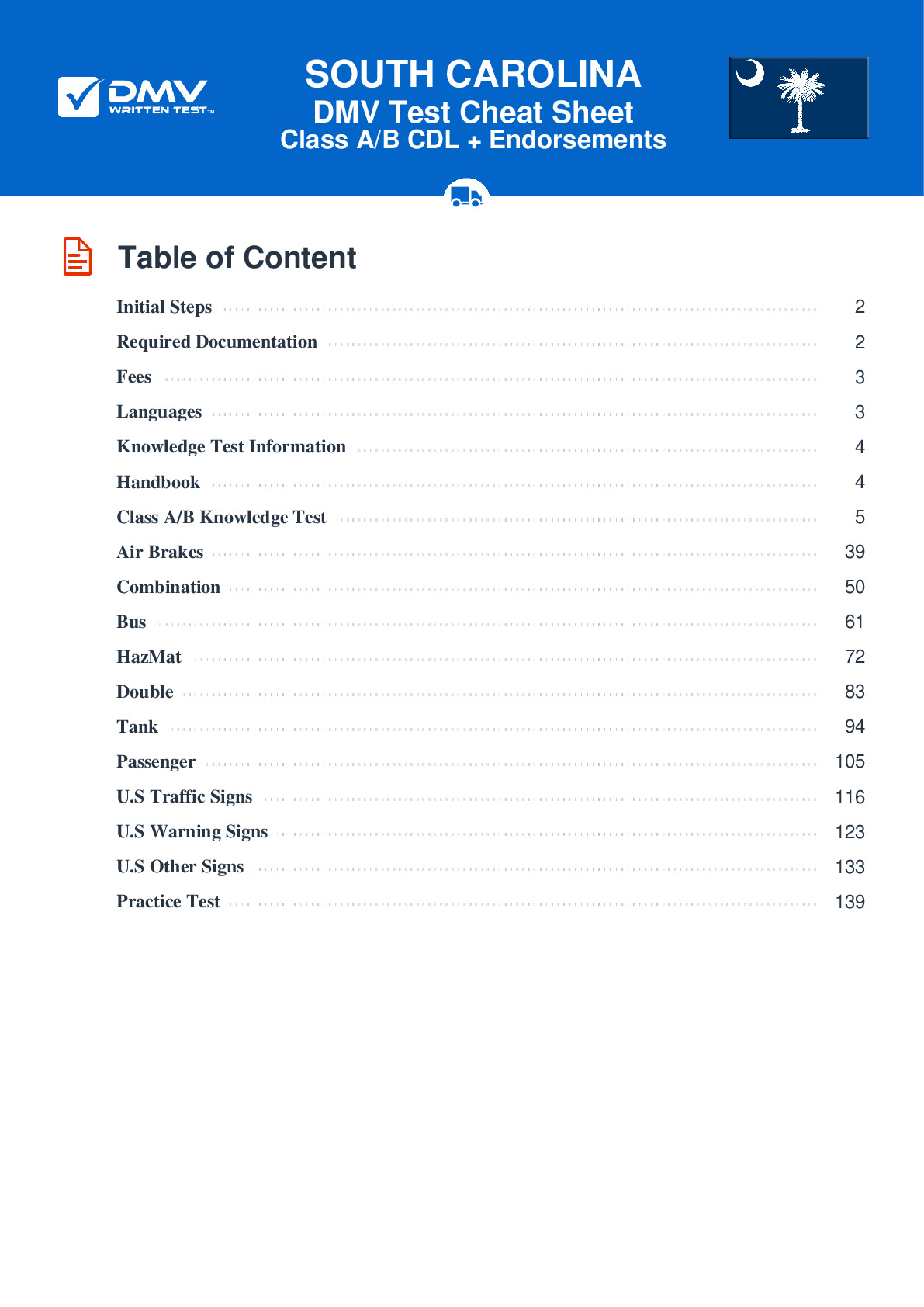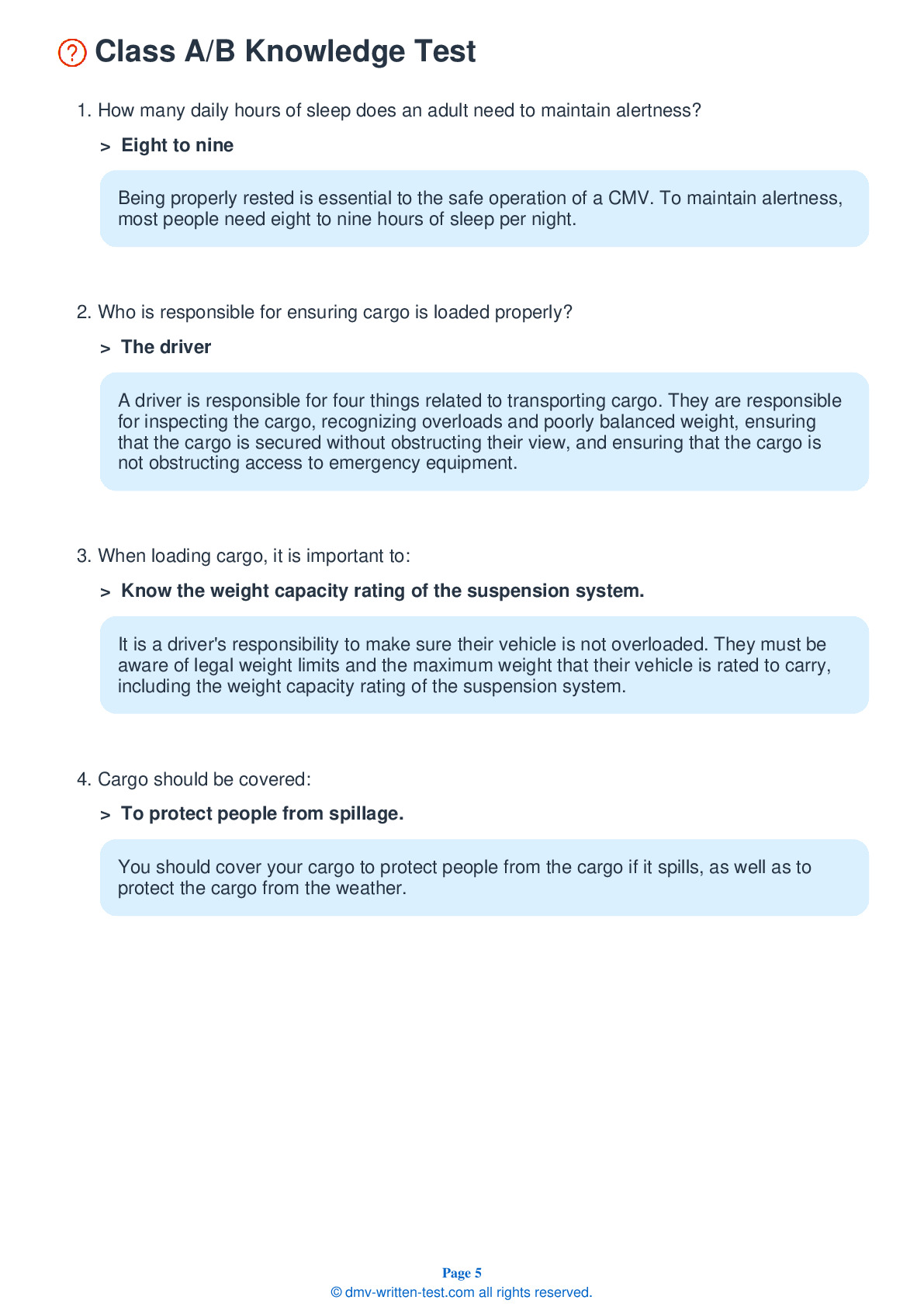Combination
All applicants who are applying for a Class A CDL should be prepared to take the Combination test. This test covers information found in Section 6 of the Commercial Driver License Manual. Section 6 provides the information needed to safely operate tractor-trailers, doubles, triples, and straight trucks with trailers. The test is made up of 20 multiple-choice questions, and applicants will need to correctly answer a minimum of 16 questions to pass. The Combination test is not a replacement for the Double/Triple endorsement test.
Number of Question
Passing Score
15. Look for matching colors when coupling glad hands. Service lines are often:
Explanation
When coupling glad hands, make sure to couple together matching glad hands. To help drivers avoid mistakes, color coding is sometimes used. Service lines are often coded with the color blue and emergency lines are often coded with the color red.
16. Emergency air lines are often coded with the color:
Explanation
In general, the parts of the service air line are coded blue and the parts of the emergency air line are coded red.
17. Operating a combination vehicle usually requires ____ operating a single vehicle.
Explanation
Combination vehicles require more skill to drive than single vehicles. Combination vehicles are usually longer and heavier, and are more vulnerable to rollovers.
18. Large combination vehicles take the longest amount of time to stop:
Explanation
Large combination vehicles take longer to stop when they are empty than when they are loaded. The decreased weight causes a vehicle's wheels to have decreased traction on the surface of the road.
19. Rollovers are most likely to happen when:
Explanation
Rollovers happen when an operator turns too fast. Drivers should be sure to slow down before entering turns and curves, especially when transporting a fully-loaded rig.
20. When a combination vehicle goes around a corner:
Explanation




